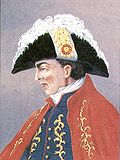Introduction
The territory within the former Viceroyalty of New Granada corresponds to areas in present-day Colombia, Ecuador, Panama, and Venezuela. It also encompassed smaller territories located in present-day Guyana, southwestern Suriname, northwestern Brazil, northern Peru, Costa Rica, and Nicaragua.
From the initial Spanish colonization of northern South America in the 1540's to the Viceroyalty of New Granada's establishment in 1718, the territories were governed by the Viceroyalty of Peru (1542–1824). They included the included smaller colonial Audiencia Real of Bogotá and New Kingdom of Granada. In 1777 the provinces of Venezuela were assigned to the new colonial Captaincy General of Venezuela (1777–1821), governed by Captains General.
The territories of the viceroyalty gained independence from Spain between 1810 and 1822 after a series of military and political struggles, uniting in the republic of Gran Colombia (1821–1831).
This page is based on this
Wikipedia article Text is available under the
CC BY-SA 4.0 license; additional terms may apply.
Images, videos and audio are available under their respective licenses.




















